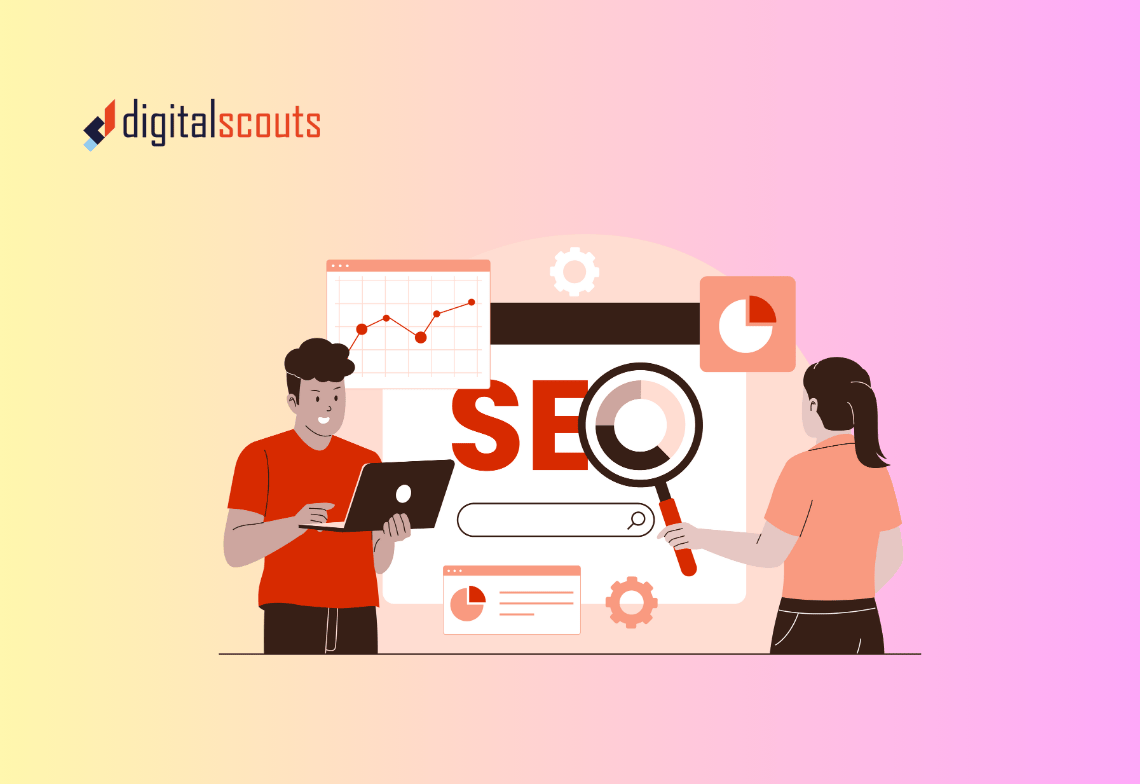Search has changed. Buyers no longer type isolated keywords into Google and scan ten blue links. They ask full questions in natural language and expect instant, summarised answers from AI powered search engines like Google AI Overviews and Perplexity. This shift means traditional keyword optimisation alone is no longer enough.
To stay visible, B2B marketers must adapt from keyword based SEO to semantic SEO — a strategy built around meaning, relationships, and authority rather than single phrases. Semantic SEO helps search engines understand how your content fits within a larger knowledge framework, improving your chances of being cited or summarised by AI systems.
This guide explains how semantic SEO works, why it matters for AI driven search, and how to use topic clusters, entities, and HubSpot’s content tools to build sustainable authority for your brand.
What semantic SEO means in practice
Traditional SEO focuses on matching keywords to queries. Semantic SEO focuses on understanding what those queries mean and how they relate to broader topics.
In simple terms, semantic SEO tells search engines what your content means, not just what it says.
For example:
-
Keyword SEO targets “B2B marketing automation tools.”
-
Semantic SEO targets the broader topic “how automation improves marketing ROI” and connects it to related subtopics like lead scoring, CRM integration, and workflow automation.
The result is content that aligns with how AI engines interpret user intent — contextually, not literally.
Why semantic SEO matters more in AI powered search
AI search models, including SearchGPT, Gemini, and Perplexity, rely on language understanding rather than keyword matching. They scan large volumes of content to extract meaning and relationships, then generate direct answers.
If your content is structured semantically, it becomes easier for AI engines to identify it as a trusted source for those answers.
Semantic SEO helps you:
-
Build topical authority so search engines associate your brand with specific subjects.
-
Increase visibility in AI summaries and featured snippets.
-
Reduce dependence on high volume keywords that are losing click share.
-
Create content ecosystems that reinforce credibility and context.
In B2B markets where buyers research complex solutions, this shift is critical. The brands that win are those that help AI engines and humans understand their expertise clearly. Learn about voice search optimisation in B2B marketing.
How search engines use entities and knowledge graphs
At the core of semantic SEO is the concept of entities — specific, defined things such as people, companies, technologies, or concepts. Search engines use entities to connect related ideas and build knowledge graphs, which map how information fits together.
For instance, when you write about HubSpot, AI engines recognise it as an entity associated with CRM, marketing automation, and RevOps. By linking your content to these entities through context and structured data, you signal relevance and expertise.
How to optimise for entities:
-
Use precise, recognisable terminology (for example, “HubSpot CRM” rather than “our platform”).
-
Link to authoritative external sources such as vendor documentation or analyst reports.
-
Add structured data markup like Schema.org “Article” and “Organization” where possible.
-
Interlink internal pages that discuss related topics to reinforce relationships.
The more connections your content forms, the stronger your position in the semantic network of search.
Build authority through topic clusters
Topic clusters are the building blocks of semantic SEO. They connect related pages around a central pillar topic, showing search engines that your site covers a subject comprehensively.
Step 1. Identify your core topics
Choose the business areas you want to be known for — for example, “HubSpot Automation,” “B2B Content Strategy,” or “Account Based Marketing.” Each becomes a pillar page that gives a high level overview and links to supporting subtopics.
Step 2. Map supporting content
Create detailed posts that address specific questions, such as “How to Automate Reporting in HubSpot,” “AI in ABM,” or “How to Build a B2B Content Strategy.” Each should link back to the pillar page and reference other related articles.
Step 3. Link strategically
Use contextual anchor text that reflects meaning rather than exact match keywords. For example:
-
“Learn how AI helps scale personalisation in ABM” instead of “AI in ABM tools.”
-
“See how to build HubSpot workflows that align with your revenue goals” instead of “HubSpot automation.”
Step 4. Refresh and expand
Update pillar pages regularly as your expertise deepens. Add new internal links when you publish related pieces so the cluster evolves naturally.
HubSpot’s SEO and Content Hub tools make this structure easy to manage. You can visualise topic clusters, see which pages lack internal links, and monitor which posts drive the most engagement.
Writing for meaning and intent, not just keywords
Semantic SEO requires writing for contextual intent. Every article should answer specific questions that buyers ask at each stage of their journey.
Awareness stage: What is the problem or opportunity?
Consideration stage: What are the possible solutions?
Decision stage: Why is this product or approach the best fit?
Use natural language that mirrors how real users search. AI engines favour conversational phrasing such as “how to choose,” “what works best,” or “why it matters.” These reflect question based searches that feed AI summaries.
Practical writing tips:
-
Start each section with a short direct answer to a question.
-
Use subheadings that mirror search intent.
-
Incorporate entities and related terms naturally (for example, “HubSpot CRM,” “RevOps alignment,” “marketing automation tools”).
-
Include a short summary or key takeaway after complex explanations.
These techniques improve both human readability and AI comprehension.
Optimise on page structure for AEO and semantic clarity
To appear in AI summaries and featured snippets, your pages must be structured for quick interpretation.
AEO friendly practices:
-
Use H2 and H3 headings to group related ideas.
-
Keep paragraphs under five lines.
-
Add bullet lists or numbered steps for processes.
-
Include an FAQ section with two to three common questions.
-
Add schema markup for FAQ and Article types.
Example FAQ for a semantic SEO page:
What is the difference between keyword SEO and semantic SEO?
Keyword SEO targets exact phrases, while semantic SEO focuses on meaning and relationships between topics.
How do topic clusters improve search visibility?
They show search engines that your site covers a subject comprehensively, which boosts authority and contextual relevance.
What role does HubSpot play in managing topic clusters?
HubSpot’s Content Hub and SEO tools help visualise and maintain internal links between related topics, ensuring consistency and scalability.
This format increases your chance of being quoted directly by answer engines and provides a better user experience.
Connect semantic SEO to HubSpot workflows
Semantic SEO is not only about structure. It is also about operational consistency. HubSpot helps automate many of the repetitive parts of SEO management.
How to use HubSpot effectively:
-
Plan content in campaigns so every cluster maps to a measurable goal such as traffic, MQLs, or influenced deals.
-
Use HubSpot AI Content Assistant to brainstorm semantically related subtopics and generate outlines.
-
Track performance by topic cluster in HubSpot’s analytics dashboard to see which areas build authority fastest.
-
Automate internal linking with workflows that flag unlinked pages within a cluster.
-
Measure revenue influence by connecting content performance to deals in your CRM.
This approach turns SEO from a creative project into a measurable part of your RevOps system.
The role of backlinks in a semantic strategy
Backlinks still matter, but quality now outweighs quantity. Links from semantically relevant sites strengthen your position within a topic ecosystem.
Best practices for semantic link building:
-
Contribute thought leadership content to industry sites that share your core entities.
-
Reference and cite credible research to attract reciprocal citations.
-
Collaborate with technology partners for co-authored resources that reinforce shared topics.
-
Avoid irrelevant guest posts or mass link exchanges — AI engines now discount unrelated backlinks.
A smaller number of authoritative, topically aligned links will deliver more semantic value than a large set of weak ones.
How semantic SEO supports RevOps alignment
Semantic SEO and RevOps share the same principle: break down silos and connect every part of the system.
When marketing uses semantic structure, content naturally aligns with sales and service messaging. Every asset supports the same customer journey, and data from HubSpot connects engagement to pipeline.
Key benefits:
-
Sales conversations match the language buyers already encountered in content.
-
Reporting in HubSpot shows which clusters drive qualified leads and revenue.
-
Content and CRM data reinforce each other, improving targeting and messaging.
Semantic SEO becomes a bridge between marketing storytelling and operational results.
Common mistakes to avoid
-
Over focusing on single keywords
Create content ecosystems, not isolated posts. Keywords are starting points, not goals. -
Publishing without internal linking
Every page should point to a pillar or related subtopic. Otherwise, your authority remains fragmented. -
Ignoring schema markup
Structured data is how AI engines interpret meaning. Add it to articles, FAQs, and reviews. -
Producing AI generated content without oversight
AI can help with scale, but human review ensures depth and originality. -
Measuring success by traffic alone
Track engagement, influenced pipeline, and revenue contribution through HubSpot’s attribution reports.
Bringing it all together
Semantic SEO represents the next evolution of B2B visibility. It is about building trust with both search engines and buyers through depth, clarity, and connection. By creating structured topic clusters, optimising for entities, and linking everything through HubSpot, your brand signals authority that AI driven search can recognise and amplify. Read our blog about how to measure and improve AEO performance.
The outcome is more than rankings. It is sustained visibility in the AI era — where your content becomes the source AI systems reference, and buyers rely on.
At Digitalscouts, we help B2B teams shift from keyword chasing to building semantic authority that drives measurable growth. From topic cluster planning to HubSpot optimisation, we make your content ecosystem work as hard as your sales team.
Ready to future proof your SEO strategy for AI driven search?
Contact Digitalscouts to build your semantic SEO roadmap.
Frequently Asked Questions
About Author
Ashish is a B2B growth strategist who helps scaleups align marketing and sales through Account-Based Marketing (ABM), RevOps, and automation. At DigitalScouts, he builds scalable content engines, streamlines lead flows with HubSpot, and runs targeted GTM programs to drive predictable pipeline. He regularly shares insights on using AI and automation to power ABM and accelerate complex buyer journeys.








